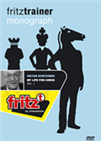International German Championship 1981
In 1981, as is well known, the Iron Curtain was still up, and the ‘Wall’ still had a few years of life ahead of it. Moreover, the Cold War was ‘hotter’ than ever. But the Iron Curtain was not equally impermeable to every citizen of an Eastern bloc country.
While citizens of the German Democratic Republic were indeed hermetically sealed off from the West, Romanian or Bulgarian grandmasters could travel to tournaments in capitalist countries. Victor Ciocaltea (on the teaser picture, the Romanian grandmaster is the one getting up from his chair) finished sixth in Bochum, just two years before his death. His compatriot IM Mihail Ghinda (born 1949) also played, as he often did in Western territory.
 Victor Kortchnoi, two-times contender for the world championship, is a piece of living chess history. He is known as one of the greatest fighters in the history of chess. On this DVD he speaks about his life and shows his game.
Victor Kortchnoi, two-times contender for the world championship, is a piece of living chess history. He is known as one of the greatest fighters in the history of chess. On this DVD he speaks about his life and shows his game.All in all, the field of participants in the Bochum tournament was composed in typical fashion for that period: most players came from the West, a few from the East and a few more from the region or the host club.
The Czech-born Lubomir Kavalek and Vlastimil Hort also participated in Bochum. But did they come from the West? Not quite.
Lubomir Kavalek, born in Prague in 1943, had first fled to West Germany in 1968, right after the Prague Spring, and then moved to the United States a little later, where he spent the rest of his life — shortly after, he became an American citizen. His victory in Bochum was no accident: the ex-Czech belonged to the world elite at the time. Kavalek died in January this year; he was 77 years old (obituary by Frederic Friedel).
On the other hand, not much needs to be said about Vlastimil Hort, who came from his Czech homeland to West Germany in 1979: to this day, contributions by the grandmaster appear regularly on this site (most recently one about Miguel Najdorf). In Bochum, he came second behind Kavalek.

Vlastimil Hort in Bochum — to quote from Billy Joel’s “Piano Man”: “When I wore a younger man’s clothes” | Photo: Gerhard Hund, via Wikimedia Commons
What also existed 40 years ago was the ‘grandmaster draw’. In contrast to modern times, where such a thing is often forbidden by tournament rules, the draw could simply be agreed early on. But where there’s a will, there’s a way — if you are not allowed to agree to a draw, you can usually manage a threefold repetition, if you, like your opponent, want to split the point. Seen under this light, this phenomenon has somehow survived the test of time.
In any case, the (agreed) grandmaster draw was often used when a couple of stronger players had to deal with many weaker opponents in a tournament: they drew among themselves and the tournament victory was then decided in a long-distance duel, by collecting points against the inferior competitors.
In their direct duel, Kavalek and Hort played a super-solid variation of the Spanish for nineteen moves — a variation that is still used today at the highest level:

Lubomir Kavalek in Bochum: the eventual champion won the ‘long-distance duel’ against Vlastimil Hort by scoring more points against the competition | Photo: Gerhard Hund, via Wikimedia Commons
AlphaZero has certainly enriched the game of chess in many ways, but the main improvement that has stuck with the public is probably the ‘outside pawn attack’. But was this a new discovery by the AI machine? Lubomir Kavalek would have laughed at that. In his first-round game against Manfred Hermann (born 1942), Kavalek advanced two such pawns, and slowly wore down his opponent:

Manfred Hermann | Photo: Gerhard Hund, via Wikimedia Commons
Perhaps the outside pawn attack has always been part of the ‘secret knowledge’ grandmasters seem to share. Vlastimil Hort, at any rate, already knew it quite well 40 years ago:
During his career, Vlastimil Hort, who himself belongs to the same generation as Bobby Fischer, met no less than eight world champions over the board. In the early 60s he crossed swords with Mihail Tal, and at the end of the eighties he was sitting over the board from Garry Kasparov. Between the two there were meetings with chess legends Botvinnik, Petrosian, Smyslov, Spassky, Fischer and Karpov.
Final standings

All games
Links



























